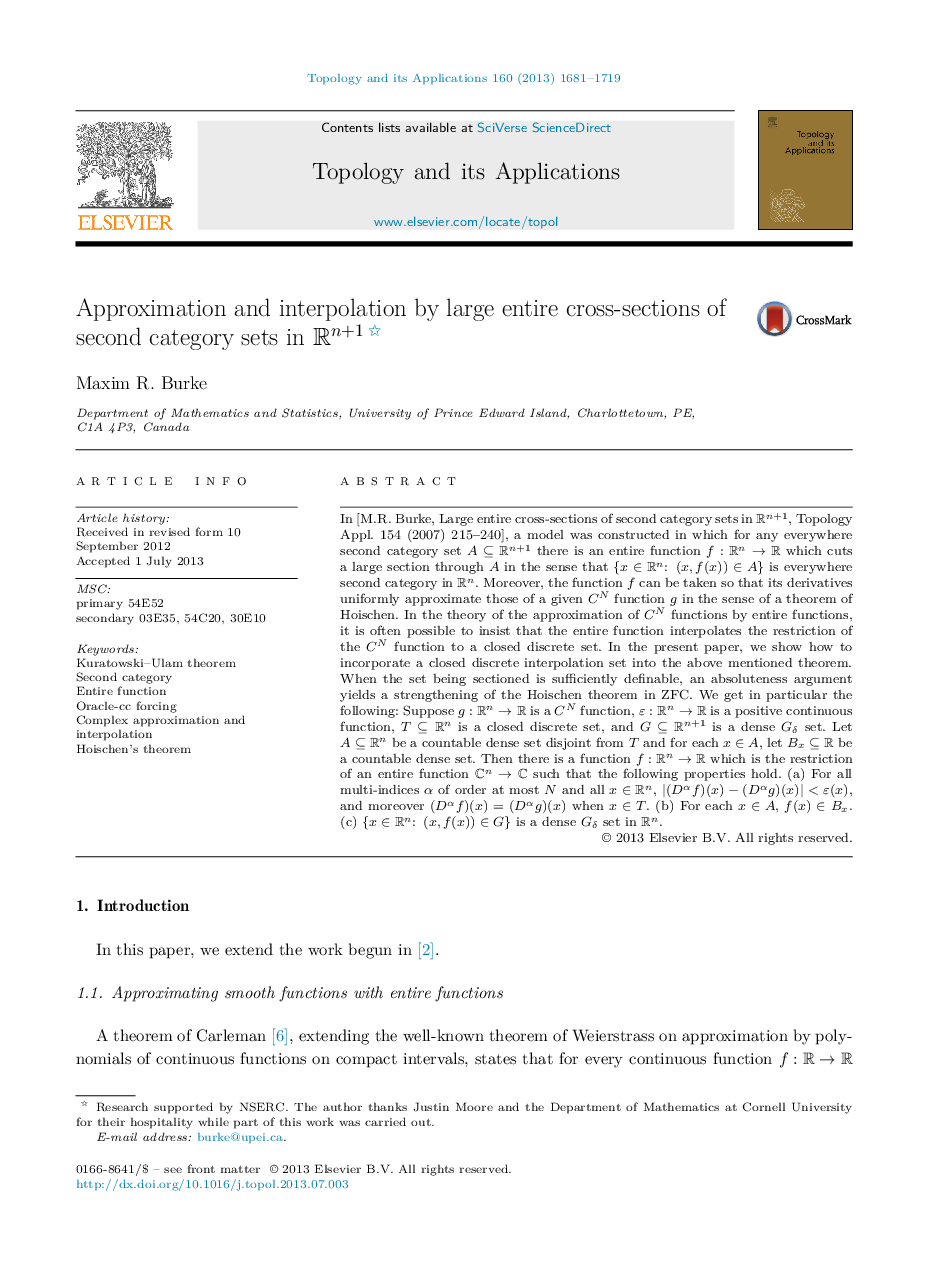| Article ID | Journal | Published Year | Pages | File Type |
|---|---|---|---|---|
| 4658913 | Topology and its Applications | 2013 | 39 Pages |
In [M.R. Burke, Large entire cross-sections of second category sets in Rn+1Rn+1, Topology Appl. 154 (2007) 215–240], a model was constructed in which for any everywhere second category set A⊆Rn+1A⊆Rn+1 there is an entire function f:Rn→Rf:Rn→R which cuts a large section through A in the sense that {x∈Rn:(x,f(x))∈A}{x∈Rn:(x,f(x))∈A} is everywhere second category in RnRn. Moreover, the function f can be taken so that its derivatives uniformly approximate those of a given CNCN function g in the sense of a theorem of Hoischen. In the theory of the approximation of CNCN functions by entire functions, it is often possible to insist that the entire function interpolates the restriction of the CNCN function to a closed discrete set. In the present paper, we show how to incorporate a closed discrete interpolation set into the above mentioned theorem. When the set being sectioned is sufficiently definable, an absoluteness argument yields a strengthening of the Hoischen theorem in ZFC. We get in particular the following: Suppose g:Rn→Rg:Rn→R is a CNCN function, ε:Rn→Rε:Rn→R is a positive continuous function, T⊆RnT⊆Rn is a closed discrete set, and G⊆Rn+1G⊆Rn+1 is a dense GδGδ set. Let A⊆RnA⊆Rn be a countable dense set disjoint from T and for each x∈Ax∈A, let Bx⊆RBx⊆R be a countable dense set. Then there is a function f:Rn→Rf:Rn→R which is the restriction of an entire function Cn→CCn→C such that the following properties hold. (a) For all multi-indices α of order at most N and all x∈Rnx∈Rn, |(Dαf)(x)−(Dαg)(x)|<ε(x)|(Dαf)(x)−(Dαg)(x)|<ε(x), and moreover (Dαf)(x)=(Dαg)(x)(Dαf)(x)=(Dαg)(x) when x∈Tx∈T. (b) For each x∈Ax∈A, f(x)∈Bxf(x)∈Bx. (c) {x∈Rn:(x,f(x))∈G}{x∈Rn:(x,f(x))∈G} is a dense GδGδ set in RnRn.
